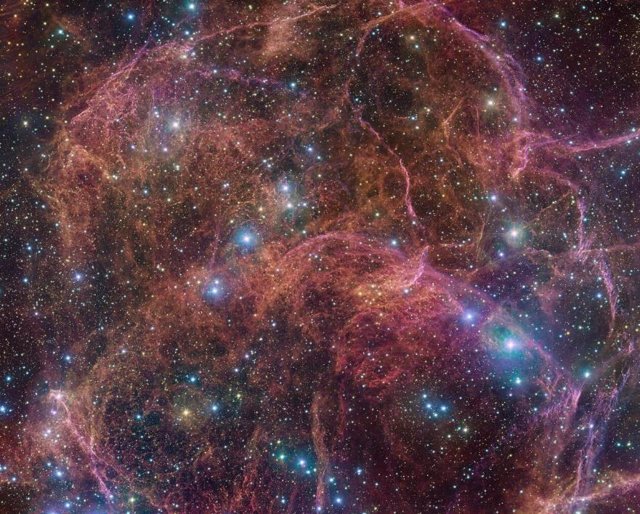Remnants of the Vela supernova captured by the VLT telescope – IT’S
Nov. 1 () –
The VLT Survey Telescope,Hosted at the Paranal headquarters of the European Southern Observatory (ESO), in Chile, has captured the remains of a giant star. A faint pink and orange cloud structure is all that remains of a massive star that ended its life in a powerful explosion about 11,000 years ago.
When the most massive stars reach the end of their lives, they often go out with a bang, in an explosion called a supernova. These explosions cause shock waves to travel through the surrounding gas, compressing it and creating intricate thread-like structures. The energy released heats the gaseous tendrils, causing them to glow, as seen in this image.
This 554-million-pixel image offers an extremely detailed view of the Vela supernova remnant, named for the southern constellation Vela (The Sails). Nine full moons fit in this image, and the entire cloud is even larger. Just 800 light-years from Earth, this spectacular supernova remnant is one of the closest known.
Upon exploding, the parent star’s outermost layers were expelled into the surrounding gas, producing the spectacular filaments seen in the new image. What remains of the star is an ultradense ball in which protons and electrons are forced together into neutrons: a neutron star, reports the ESO in a statement.
The Vela remnant neutron star, located slightly off this image at upper left, it turns out to be a pulsar spinning on its own axis at the incredible speed of more than 10 times per second.
This image is a mosaic of observations made with the OmegaCAM wide-field camera on the VLT Survey Telescope (VST). The 268-million-pixel camera can take pictures through various filters that let light of different colors through. In this particular image of the Vela remnant, four different filters were used, represented here by a combination of magenta, blue, green, and red.
The VST is owned by the Italian National Institute of Astrophysics, INAF, and with its 2.6 meter mirror it is one of the largest telescopes dedicated to observing the night sky in visible light. This image is an example of such a study: the VST Photometric H alpha Survey of the Southern Galactic Plane and Bulge (VPHAS+). For more than seven years, this survey has mapped a significant portion of our galaxy, giving astronomers a better understanding of how stars form, evolve, and eventually die.












